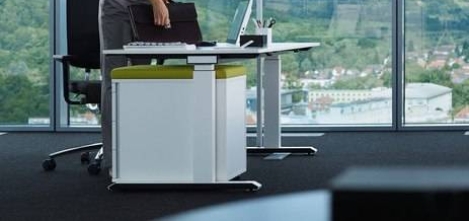November 23, 2015
RIBA signs UN Compact as part of an increased focus on ethics 0
 RIBA (The Royal Institute of British Architects) has become a signatory to the United Nations Global Compact (UNGC) and has undertaken to support its principles on human rights, labour standards, the environment and corruption. Joining the UNGC is part of the RIBA’s focus on ethics which has recently included co-founding a new coalition to develop a set of globally recognised ethics standards for real estate and related professional organisations. RIBA President Jane Duncan said: “As our profession changes and becomes increasingly international, so must our approach to developing and reinforcing professional ethics. Architecture has a direct impact on societies and economies; it shapes and influences the world we live in. For this reason, we architects have a duty to uphold the highest standards wherever we practice. I am delighted that RIBA has signed the UN Global Compact and undertaken to support and promote its principles.”
RIBA (The Royal Institute of British Architects) has become a signatory to the United Nations Global Compact (UNGC) and has undertaken to support its principles on human rights, labour standards, the environment and corruption. Joining the UNGC is part of the RIBA’s focus on ethics which has recently included co-founding a new coalition to develop a set of globally recognised ethics standards for real estate and related professional organisations. RIBA President Jane Duncan said: “As our profession changes and becomes increasingly international, so must our approach to developing and reinforcing professional ethics. Architecture has a direct impact on societies and economies; it shapes and influences the world we live in. For this reason, we architects have a duty to uphold the highest standards wherever we practice. I am delighted that RIBA has signed the UN Global Compact and undertaken to support and promote its principles.”











 Biodynamic lighting is an artificial light source that replicates the dynamic variations of daylight and sunlight through a light management system. Up until recent times, it was commonly believed that light was only needed for seeing. However, in 2001, an American scientist, G. C. Brainard discovered a circadian photoreceptor in the retina, which receives a specific quality and quantity of light, and sets the biological clock.* He discovered that light not only provides us with the ability to see, but that light enters the eye via the ‘fourth pathway’, which has a vital non-visual or biological effect on the human body. His studies showed that a certain quantity and quality of light stimulates the biological clock, also known as the circadian rhythm, which regulates hormone levels, particularly melatonin and cortisone, in the body and so plays a vital role in our physical and mental wellbeing.
Biodynamic lighting is an artificial light source that replicates the dynamic variations of daylight and sunlight through a light management system. Up until recent times, it was commonly believed that light was only needed for seeing. However, in 2001, an American scientist, G. C. Brainard discovered a circadian photoreceptor in the retina, which receives a specific quality and quantity of light, and sets the biological clock.* He discovered that light not only provides us with the ability to see, but that light enters the eye via the ‘fourth pathway’, which has a vital non-visual or biological effect on the human body. His studies showed that a certain quantity and quality of light stimulates the biological clock, also known as the circadian rhythm, which regulates hormone levels, particularly melatonin and cortisone, in the body and so plays a vital role in our physical and mental wellbeing.





















December 8, 2015
Linear equations are no longer enough to determine the size of offices
by Mark Eltringham • Comment, Facilities management, Furniture, Technology, Workplace design
In 2013, the US Census Bureau announced that the official human population of the Earth had exceeded 7 billion for the first time. This provoked people to raise concerns that were couched in Malthusian pessimism. Although people might have assumed we’d left behind this kind of flawed thinking, there is obviously something appealing about the idea that exponential population growth is unsustainable when resources increase only in arithmetical terms. We’ve got a problem but what we should have learned in the two centuries since Thomas Malthus first popularised the idea is that there are complex factors that can influence the resources we need to survive, not least in terms of greater efficiency in the way we produce them. A similar debate is also apparent in the way in which the commercial property market is able to offer the right sort of buildings for modern organisations.
(more…)